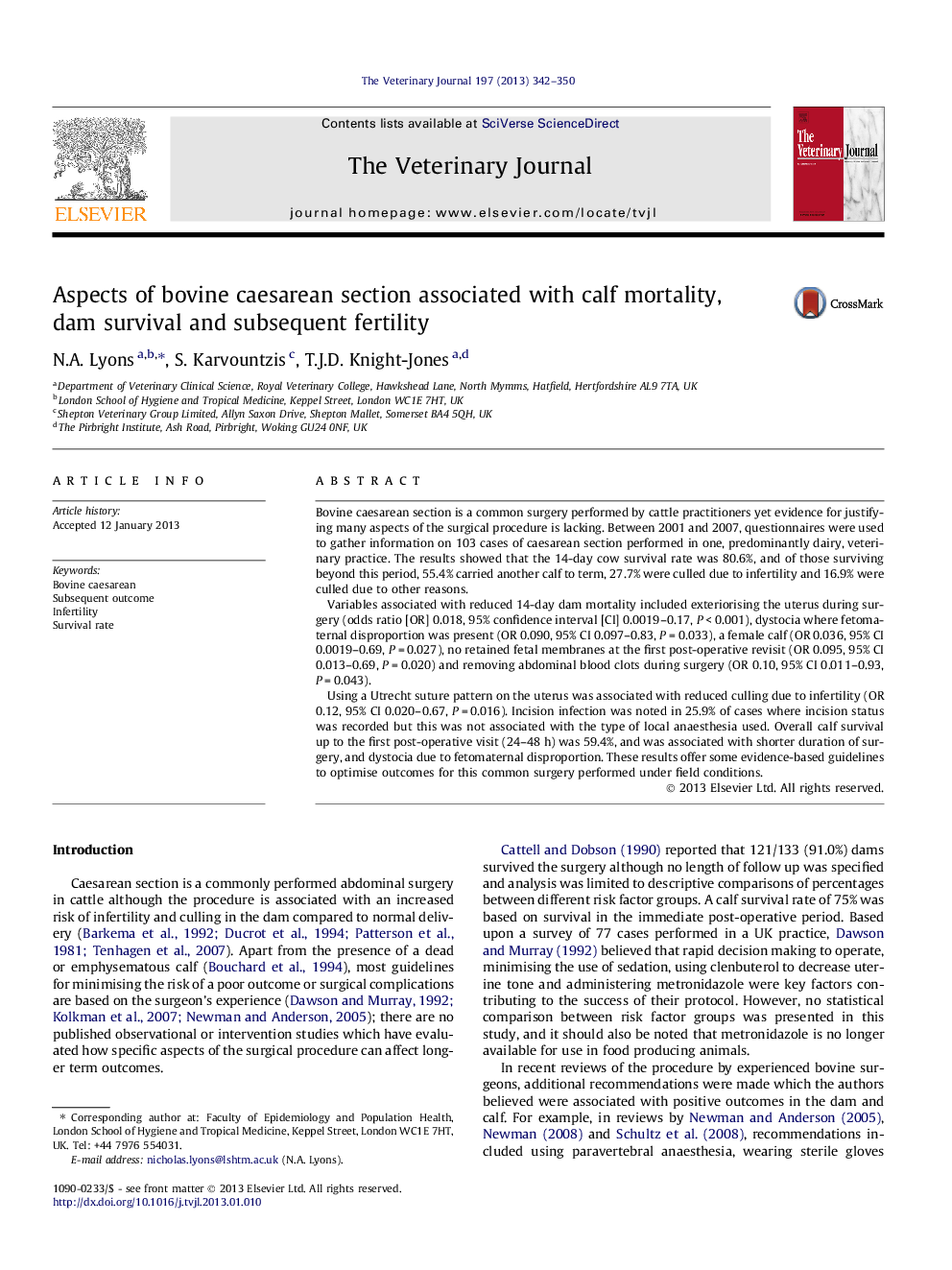| Article ID | Journal | Published Year | Pages | File Type |
|---|---|---|---|---|
| 5798262 | The Veterinary Journal | 2013 | 9 Pages |
Bovine caesarean section is a common surgery performed by cattle practitioners yet evidence for justifying many aspects of the surgical procedure is lacking. Between 2001 and 2007, questionnaires were used to gather information on 103 cases of caesarean section performed in one, predominantly dairy, veterinary practice. The results showed that the 14-day cow survival rate was 80.6%, and of those surviving beyond this period, 55.4% carried another calf to term, 27.7% were culled due to infertility and 16.9% were culled due to other reasons.Variables associated with reduced 14-day dam mortality included exteriorising the uterus during surgery (odds ratio [OR] 0.018, 95% confidence interval [CI] 0.0019-0.17, PÂ <Â 0.001), dystocia where fetomaternal disproportion was present (OR 0.090, 95% CI 0.097-0.83, PÂ =Â 0.033), a female calf (OR 0.036, 95% CI 0.0019-0.69, PÂ =Â 0.027), no retained fetal membranes at the first post-operative revisit (OR 0.095, 95% CI 0.013-0.69, PÂ =Â 0.020) and removing abdominal blood clots during surgery (OR 0.10, 95% CI 0.011-0.93, PÂ =Â 0.043).Using a Utrecht suture pattern on the uterus was associated with reduced culling due to infertility (OR 0.12, 95% CI 0.020-0.67, PÂ =Â 0.016). Incision infection was noted in 25.9% of cases where incision status was recorded but this was not associated with the type of local anaesthesia used. Overall calf survival up to the first post-operative visit (24-48Â h) was 59.4%, and was associated with shorter duration of surgery, and dystocia due to fetomaternal disproportion. These results offer some evidence-based guidelines to optimise outcomes for this common surgery performed under field conditions.
